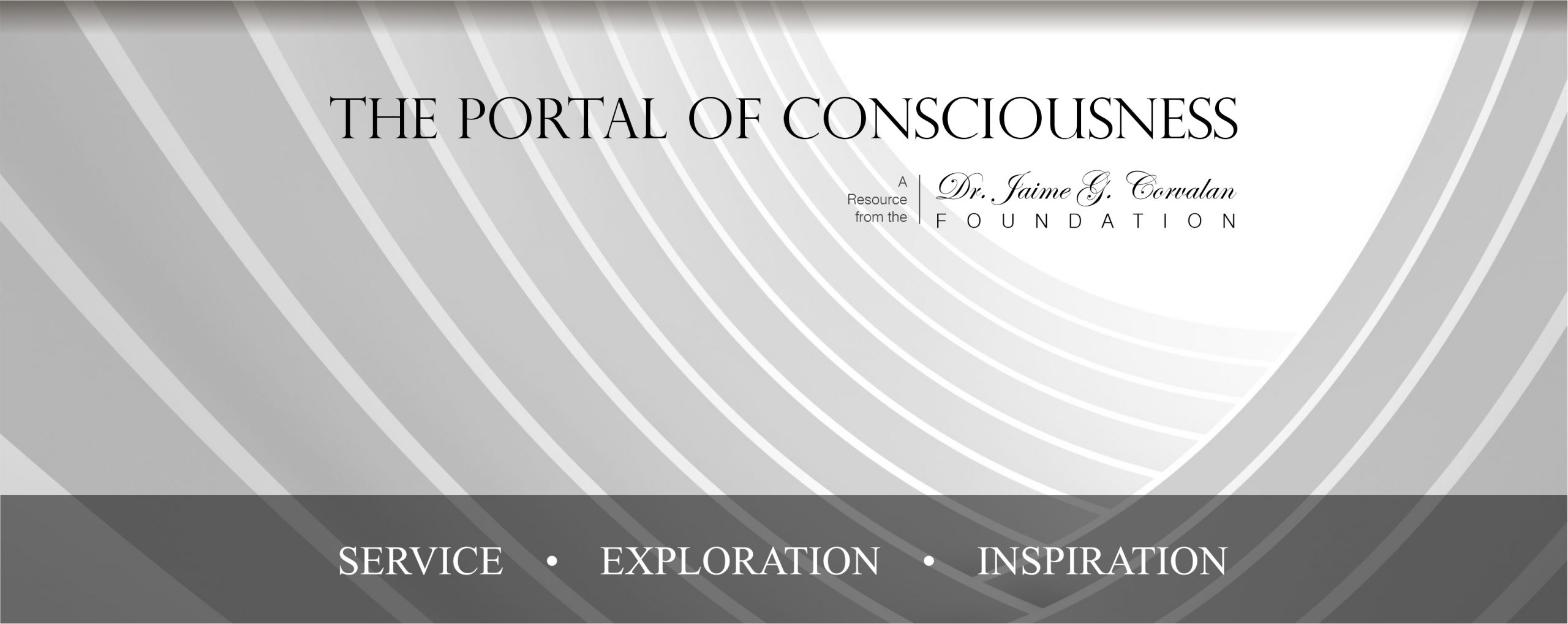
In each of these portals, Dr. Jaime Corvalan shares the experience and wisdom he has developed throughout the course of his life. Please explore each of them as they relate to your own life.
“Now, I came to this idea of bliss because in Sanskrit, which is the great spiritual language of the world, there are three terms that represent the brink, the jumping-off place to the ocean of transcendence: sat-chit-ananda. The word ‘Sat’ means being. ‘Chit’ means consciousness. ‘Ananda’ means bliss or rapture.
I thought, ‘I don’t know whether my consciousness is proper consciousness or not; I don’t know whether what I know of my being is my proper being or not; but I do know where my rapture is. So let me hang on to rapture, and that will bring me both my consciousness and my being.’ I think it worked.”
“By consciousness I understand the relation of psychic contents to the ego, in so far as this relation is perceived as such by the ego. Relations to the go that are not perceived as such are unconscious. Consciousness is the function or activity which maintains the relation of psychic contents to the ego. Consciousness is not identical with the psyche because the psyche represents the totality of all psychic contents, and these are not necessarily all directly connected with the ego, i.e., related to it in such a way that they take on the quality of consciousness.”
– C.G. Jung, Psychological Types, CW 6, par. 700
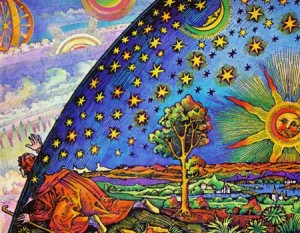
Transcendent Consciousness is beyond the realm of duality, it cannot be touched, manipulated or used (like electricity, or any kind of energy). It informs everything – it is the source that makes flowers beautiful, it gives the spark to all life. It is beyond the manifest yet is everywhere and nowhere. We perceive the universe, but transcendent energy consciousness is beyond the infinite; it is both immanent (in everything) and transcendent (beyond everything).
Edward Edinger, in his book, The Creation of Consciousness: Jung’s Myth for Modern Man, notes that Dr. Jung felt that “the experience of consciousness is made up of two factors, “knowing” and “withness,” ie, knowing in the presence of an “other,” in a setting of twoness” – essentially, the experiencing of opposites. While true, this is only a small part of the story.
We can explain the operation and features of the universe using the most advanced scientific understanding and the most magnificent technologies – from Higgs Bosons to Black Holes to Dark Matter and Energy. Yet, the utility of science ends at the boundaries of the known universe – space and time. What lies beyond and behind everything transcends reason and the intellect, it renders powerless our most spectacular inventions and constructs; transcendent consciousness informs and gives rise to everything manifest but it, itself, cannot be perceived, much less imagined.
SAT-CIT-ANANDA is a compound of three Sanskrit words, defined as “Ultimate Being” – “Pure Consciousness” – “Perfect Bliss.” It is a term used in various Hindu traditions referring to the subjective experience of the universal mind, or Brahman.
Experiencing SAT-CIT-ANANDA gives us a glimpse of the Sacred, the ultimate reality beyond this realm of duality. It connects us with the ultimate self or pure consciousness – Brahman, that which is both immanent (everywhere) and transcendent (beyond everything and nothing.
The Hindu philosopher Sri Aurobindo notes that while the soul is manifest in the realm of time and space through our bodies, it nevertheless maintains its connection with the transcendent. So, the concept of SAT-CIT-ANANDA puts us back in touch with our own, true identity, our connection to the sacred.
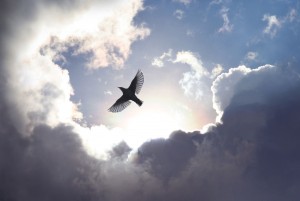 Why does everything have to die?
Why does everything have to die?Life needs death to maintain a balance. Without one, you cannot have the other. Without death, living entities would multiply and consume everything, thus destroying all of creation. Consciousness provides for a balance by making life and death interdependent. Like the Apollonian energies of creation are balanced by the Dionysian energies of destruction, life and death are really two aspects of the same.
The renowned mythologist, Joseph Campbell, answers this question by demonstrating how Life lives on Death. In order to continue its existence, Life Must Feed on Other Life. Life and death, as a consequence, are two sides of the same coin.
When the brain dies, we don’t know what happens. In fact, “happening” stops, for our bodies are the vehicles by which we experience this world of time and space.
When the body dies, the tools to experience this world – our sensory apparatus – cease to function. The body, however, is not merely a shell or avatar, giving us sensory experiences. The body is animated by something deeply rooted in all life – consciousness. While consciousness is immanent (present in every part of this universe), it is also transcendent. So, when the body dies, consciousness does not, for it is of the transcendent.
As we think, we create time (within the brain). We orient ourselves in time and space with apodictic certainty that the rules of the duality, to which we are subject, apply across the universe. We therefore understand that everything is subject to this great cycle of Birth / Death / Rebirth.
Recognition of this great cycle, seen throughout nature, may have played a part in the 1st great act of civilization – burial of the dead. Through this act we honor the heroic act of being alive and struggling through the various levels of consciousness we discussed in Robert Johnson’s work.
This act represents a beginning in the shift from human animal to human spirit.
As we noted before, while the body dies, consciousness does not. Transcendent Consciousness is not of duality (the world of time and space); it transcends our sensory experience but also gives rise to it.
Time and Space are intrinsic to our experience of duality. As we think, we are creating time. One cannot describe transcendence is it is beyond time and space, it is everything and nothing, it is and it is not; it is beyond the act of description itself.
The three levels of the evolution of consciousness, that vie for dominance at various points within our lives, are represented by Don Quixote, Hamlet and Faust in Robert Johnson’s seminal work, Transformation: Understanding the Three Levels of Masculine Consciousness.
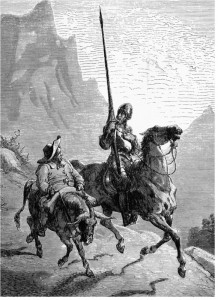 Don Quixote – the innocent child, unaware of life’s pain. This is simple awareness, a direct connection with nature.
Don Quixote – the innocent child, unaware of life’s pain. This is simple awareness, a direct connection with nature.
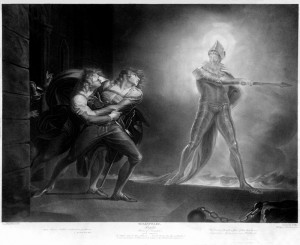 Hamlet – conscious imperfection, a person divided within himself, not knowing how to act, feeling out of control, incomplete, powerless and in despair at the tragedies of life. This is often viewed as the state of Western man today.
Hamlet – conscious imperfection, a person divided within himself, not knowing how to act, feeling out of control, incomplete, powerless and in despair at the tragedies of life. This is often viewed as the state of Western man today.
Faust – the state of a fully integrated person, who has grown in awareness by struggling through the pitfalls and pain of the second level of consciousness. Through inner work, Faust – like us – restores to wholeness that which he had torn apart and becomes open to the ecstatic, authentic consciousness that derives from the alignment of ego and soul.
While the book title speaks of “masculine” consciousness, Johnson is not speaking of the male gender – these aspects of consciousness are applicable to all people, men and women alike. He is speaking of the attributes which are attached to the masculine aspect of the psyche – assertiveness, a call to action and the like. Johnson speaks to the feminine aspects of consciousness in his excellent work, She.
Kant understood that true forms exist a priori to (before) our experience; this was an idea derived from Plato’s Theory of Forms. The images of these forms are always and ever-present in our minds; we know with apodictic certainty that space in one place will follow the same rules and forms in another, no matter whether here on Earth of millions of light years away!
Einstein had this same, incredible insight; he saw that everything is related to the speed of light, which gives form and structure (in matter and energy) to everything within our universe. The speed of light is a constant and constitutes everything within the universe; we are, essentially, beings of light! This insight reflects Kant’s understanding that we exist within a field; his insight relates to the psyche while Einstein’s came, of course, in the realm of physics.
Before Kant, it was generally held that a priori knowledge must be analytic, meaning that what is stated in the predicate must already be present in the subject and therefore be independent of experience (for example, “An intelligent man is intelligent” or “An intelligent man is a man”). In either case, the judgment is analytic because is arrived at by analyzing the subject.
It was thought that all certain a priori judgments are of this kind: that in all of them there is a predicate that is only part of the subject of which it is asserted. If this were so, attempting to deny anything that could be known a priori (for example, “An intelligent man is not intelligent” or “An intelligent man is not a man”) would involve a contradiction. It was therefore thought that the Law of contradiction is sufficient to establish all a priori knowledge.
The Christian separation of matter and spirit, of the dynamism of life and the realm of the spirit, of natural grace and supernatural grace, has really castrated nature…The true spirituality, which would have come from the union of matter and spirit, has been killed.
– Joseph Campbell, The Power of Myth
The Dream of the Cosmos is the story of a multi-layered quest to understand the causes of human suffering and to re-connect with a deeper reality than the one we inhabit in this physical dimension of experience. It answers the question “Who are we and why are we here, on this planet?” It is written for those who are looking for something beyond the superficial values of our culture, who may be disillusioned with religious and secular belief systems as currently presented and who question the political values which are deeply mired in the pursuit of power. It is written with two voices: one the voice of a personal quest and the other which explores the historical and psychological causes that have brought our present view of reality into being.
In it I seek to recover a very ancient image of the soul, one that has long been lost. The soul was once imagined as an all-embracing Web of Life—not so much something that belongs to us as something to which we belong, in whose life we participate. The world is crying out for the primary values that have always been associated with soul understood in this wider sense: wisdom, compassion, justice, relationship—values which I will define further as the book proceeds.
Over the course of many centuries, we have developed a formidable intellect, a formidable science, a formidable technology. But what of the soul—source of our deepest instincts and feelings? What of our visions, dreams and hopes as well as our unhealed wounds and the suffering generated by our cruelty and lack of compassion towards each other? What of our need for relationship with this unrecognized dimension of reality? The pressing need for the soul’s recognition has brought us to this time of choice. It is as if mortal danger is forcing us to take a great leap in our evolution that we might never have made were we not driven by the extremity of circumstance.
In one of the medieval Grail Legends, Parsifal asks the question of the wounded Grail Guardian, “What ails thee, Father?” It seems appropriate to ask this question of our culture. Our current worldview rests on the premise of our separation from and mastery of nature, where nature is treated as object with ourselves as controlling subject. This belief has its roots in a far distant past—in the Myth of the Fall in the Book of Genesis and its profound influence on the development of Western civilization. There we find the story of our expulsion from a divine world and our Fall into this world, a Fall that was brought into being by a woman, Eve, who disobeyed the command of God and brought death, sin and suffering into being. From this myth there developed the belief that the whole human race was tainted by original sin, a subject that will be explored in later chapters.
Author Anne Baring, from her magnificent work, The Dream of the Cosmos